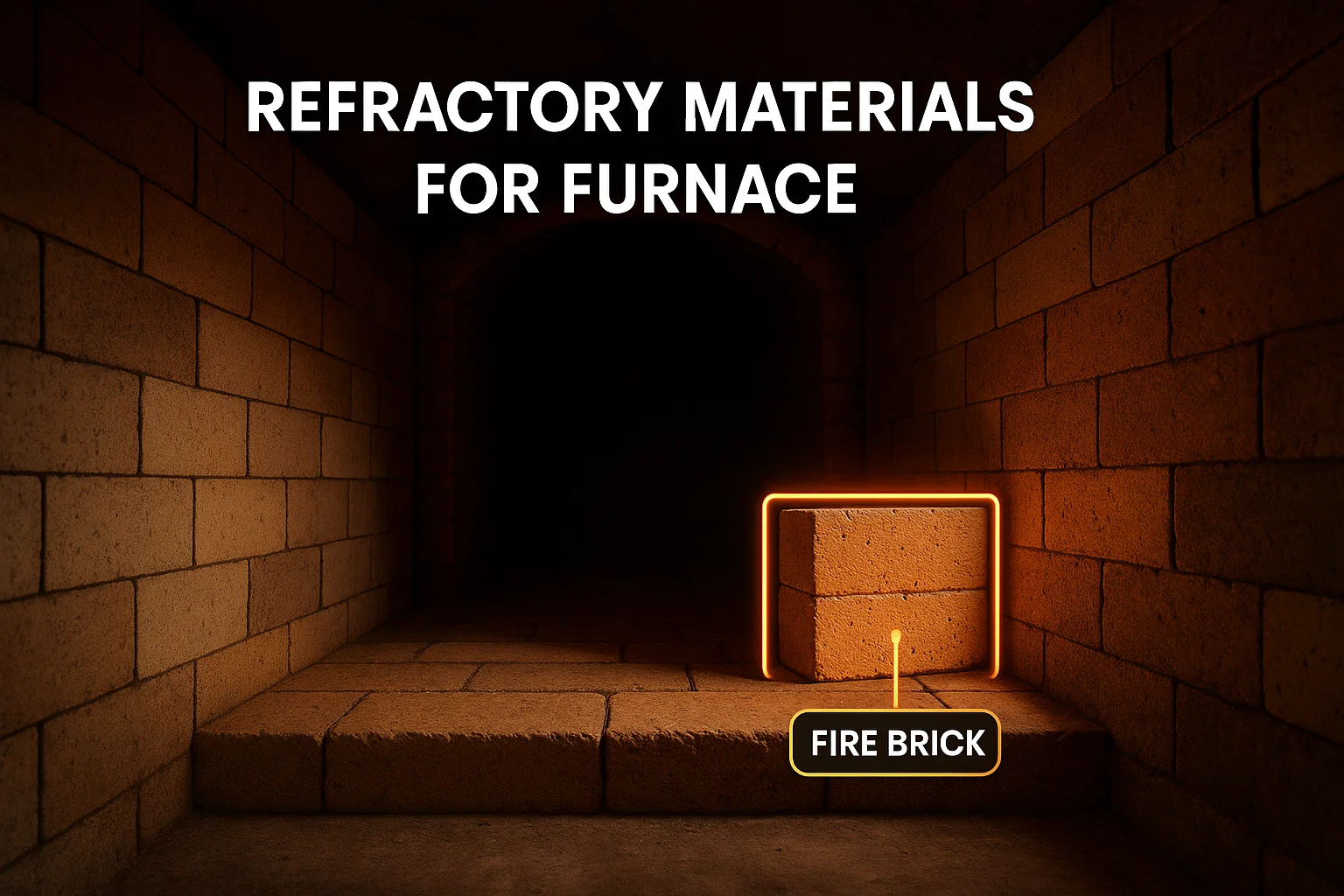Global demand for refractory materials for furnace is surging with the market expected to climb from nearly $28 billion in 2024 to over $38 billion by 2033.
As manufacturing advances, new demands are placed on refractory materials for furnace. Today, it’s not enough for these materials to simply handle high temperatures. Factories are also looking for solutions that help save energy, keep equipment running longer without interruptions, and support cleaner, more sustainable operations.
Understanding What is the Purpose of Fire Bricks? is essential, as the right choice can directly impact energy use, maintenance needs, and compliance with environmental regulations.
Yet, even seasoned plant managers can fall into costly traps when selecting or installing these critical materials.
Understanding Refractory Materials for Furnace
Refractory materials for furnace are specially engineered to resist not only intense heat but also chemical corrosion and mechanical stress. Their primary job is to line the inside of furnaces, kilns, and reactors, protecting the structural shell and ensuring stable, efficient operation.
Major Types of Refractory Materials
| Type | Features & Typical Use Cases |
| Fire brick for furnace | Made with high levels of aluminum oxide or silica; best suited for lining areas exposed to flames and extreme heat. |
| Refractory cement for furnace | Used for repairs, sealing, and custom shapes |
| Insulation bricks for furnace | Lightweight, low thermal conductivity; boosts energy efficiency |
| Castables and Monolithics | Flexible installation, good for complex geometries |
The right combination of these materials is crucial for industries like steel, glass, and cement, where even a small failure can mean major production losses.
How to Avoid Costly Mistakes When Buying Refractory Materials for Furnace
Navigating the purchase of refractory materials for furnace can be complex. Learn to prevent the most frequent and expensive blunders.
1. Focusing Only on Upfront Cost
It’s tempting to choose the cheapest option, but lower-quality materials often lead to frequent repairs, increased energy consumption, and unplanned shutdowns. Factor in all expenses from start to finish, including setup fees, regular maintenance costs, and the anticipated duration of service.
2. Ignoring Furnace-Specific Requirements
Not all furnaces are created equal. Factors like maximum operating temperature, chemical exposure, and thermal cycling must guide your selection. For example, fire brick for furnace is excellent for high-abrasion zones, while insulation bricks for furnace are better for areas where energy efficiency is a priority.
3. Overlooking Supplier Credentials
Choose suppliers with a proven track record, like Ganesha’s Refractories, who offer technical support and quality assurance. Reliable partners can help you select the right refractory cement for furnace or recommend the best mix for your unique process.
4. Neglecting Proper Installation and Maintenance
Even the best materials can fail if not installed or maintained correctly. Ensure your team follows best practices and consults experts when needed. Regular inspections and timely repairs with suitable refractory cement for furnace can prevent minor issues from escalating.
5. Missing Out on New Technology
The shift toward more sustainable manufacturing has led to innovations in refractory materials—from low-carbon formulations to products designed for electric arc furnaces. Staying updated on these trends can help you future-proof your investment and meet evolving industry standards.
Smart Selection: What to Keep in Mind
- Assess your furnace’s operating conditions (temperature, atmosphere, mechanical load)
- Evaluate material characteristics: how well they handle temperature changes, their reaction to chemicals, and their physical durability.
- Consider installation and maintenance needs: ease of repair, availability of compatible materials
- Look for certifications and supplier support: ensure quality and technical backup
For a deeper understanding of specific applications, explore the Uses of Refractory Bricks because these concepts are crucial in making informed choices for your facility.
Frequently Asked Questions
What are refractory materials for furnace used for?
Refractory materials are used to line furnaces, kilns, and reactors, protecting them from extreme heat, chemical attack, and mechanical wear, thus ensuring safe and efficient operation.
What is the difference between fire brick for furnace and insulation bricks for furnace?
Fire bricks are dense and designed to withstand high temperatures and abrasion, making them suitable for direct flame zones. Lightweight insulating bricks resist heat transfer effectively, primarily serving to minimize thermal loss and boost energy performance in buildings.
How do I choose the right refractory cement for furnace repairs?
Select cement based on the maximum temperature, chemical environment, and compatibility with existing lining materials. Consulting with technical experts or suppliers like Ganesha’s Refractories can help ensure a proper match.
Why is it important to consider the supplier’s credentials when buying refractory materials?
A reputable supplier ensures product quality, provides technical support, and helps you avoid substandard materials that could lead to premature failure and costly downtime.
What trends are shaping the refractory materials market?
The market is driven by the growth of steel and cement industries, a shift toward energy-efficient and sustainable materials, and the adoption of advanced products for electric arc furnaces and other modern technologies.




